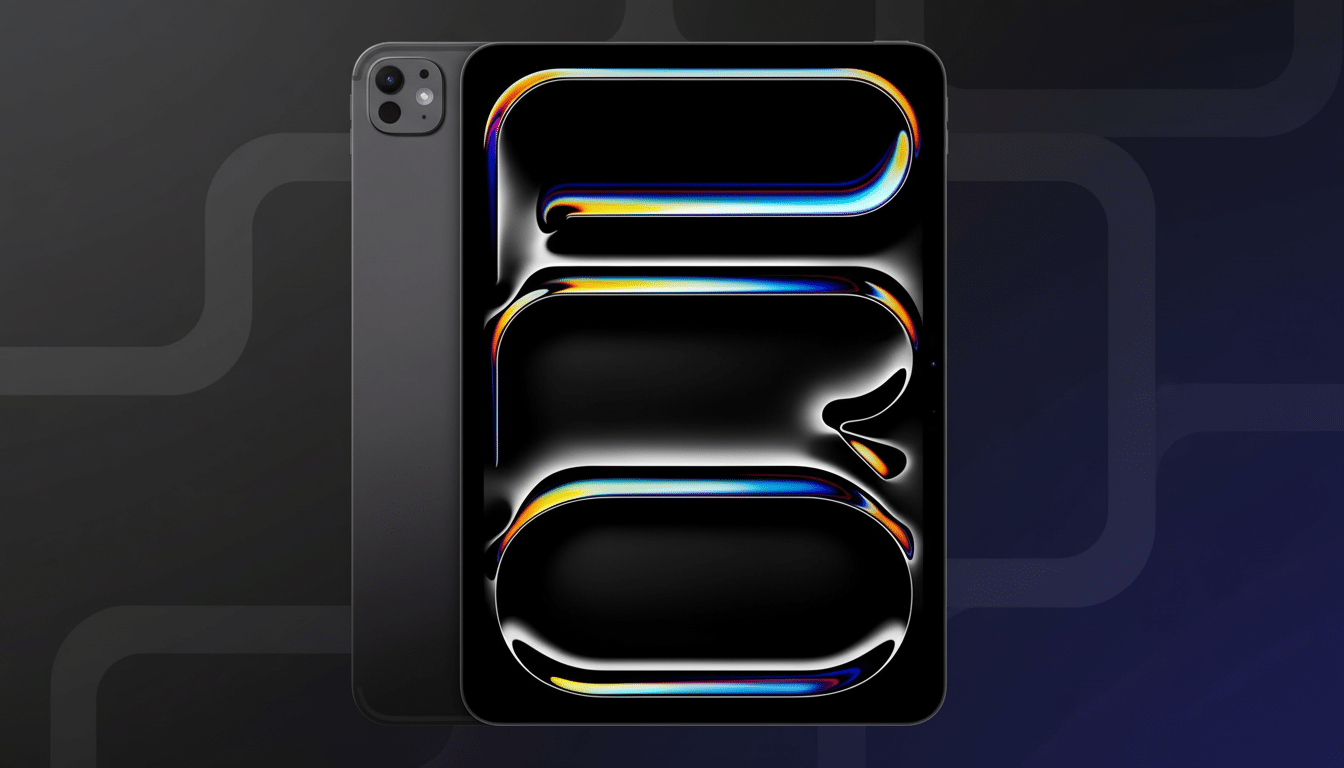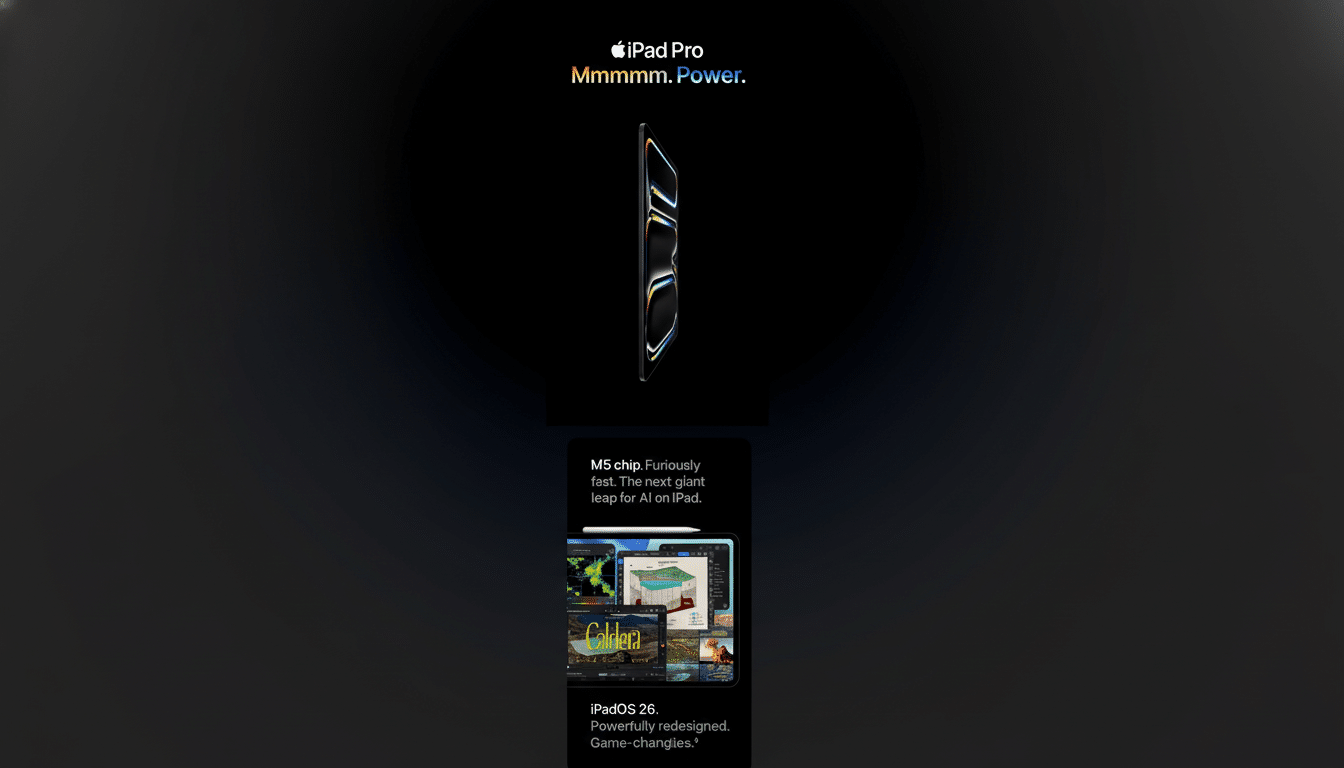Apple’s new wave of hardware revolves around one concept: make on‑device AI real-time. The company breathed an M5 system-on-a-chip into the flagship 14-inch MacBook Pro, iPad Pro and Vision Pro, too, hoping to transport creative, productivity and spatial computing tasks we do every day into near- and offline encounters.
M5 Silicon Gets the Spotlight with CPU, GPU and AI Gains
The M5, which is being made on 3nm process technology, offers a 10‑core CPU (with six efficiency cores and four performance cores) and a new 10‑core GPU architecture, coupled with a 16‑core Neural Engine. Apple says peak GPU compute for AI workloads is up to 4x that found on M4, and ray tracing throughput is around 45% higher. CPU performance: the CPU receives a roughly 15% uplift generation over generation, with unified memory bandwidth being bumped up to 153GB/s, so that’s almost a 30% increase.
- M5 Silicon Gets the Spotlight with CPU, GPU and AI Gains
- 14‑Inch MacBook Pro Gets the M5 Bump and Faster AI Speeds
- iPad Pro Leans Into On‑Device AI with Connectivity Upgrades
- Speed, Comfort, and Clarity with Vision Pro
- What It Means for Creators and IT Buyers
- Bottom Line: Apple’s M5 Aims to Make Fast, Private AI Normal

Details: AI inference, including diffusion image generation and large language model decoding, relies heavily on GPU throughput and memory bandwidth. The consortium behind MLPerf benchmarks, MLCommons, has proven time and again that memory access and parallelism are critical bottlenecks. The M5’s increased bandwidth and GPU capacity will mean faster token generation, speedier image synthesis and more snappy multimodal features in Meta-optimized apps that also take advantage of Metal and Apple’s Neural Engine.
14‑Inch MacBook Pro Gets the M5 Bump and Faster AI Speeds
The entry 14‑inch MacBook Pro now begins with M5 and has faster internal storage, yet has the same chassis, ports, and Mini LED display. Apple is positioning it as the entry‑level “AI‑ready” Pro notebook in its lineup. The company claims as much as a 3.5x improvement in AI performance and up to 1.6x faster graphics than the M4 configuration, with about 20% better multithreaded CPU performance overall.
Memory bandwidth jumps up to 153GB/s, a significant leap for code completion models, audio transcription and image upscaling. Configurations now reach 4TB of storage in the base tier, with up to 24 hours of battery life. The base model comes with a 10‑core CPU, 10‑core GPU and 16GB of unified memory for $1,599.
iPad Pro Leans Into On‑Device AI with Connectivity Upgrades
iPad Pro M5 focuses on responsiveness for creative and pro apps. Apple pegs the AI throughput at up to 3.5x that of the M4 iPad Pro and as much as 5.6x the M1 generation, with faster storage for media-hungry workloads. The cellular models feature the new C1X modem, meanwhile, an N1 chip is in charge of Wi‑Fi, Bluetooth and Thread for what should lead to even tighter connectivity with accessories and smart home devices.
Real‑world impact comes to tasks like local diffusion models in apps like Draw Things, and can include background object selection (in photo editors), on‑device transcription (in note‑taking utilities). Fast charging is a major upgrade — Apple claims 0–50% in around 30 minutes. The 11‑inch model begins at $999; the new 13‑inch has a starting price of $1,299, both with the same thin design and display tech, as well as an anti‑reflective coating from the previous generation.

Speed, Comfort, and Clarity with Vision Pro
Vision Pro moves to M5 with an all-new Soft Dual Knit Band for more forgiveness during long sessions. Apps open faster and Safari is more responsive, a useful change for users multitasking in space across multiple windows, or viewing 3D content.
Displays receive a significant bump: about 10% more pixels on custom micro‑OLED panels and a higher ceiling refresh rate of 120Hz (previously at least 100Hz). Battery life is extended by about 30 minutes — to 2.5 hours under typical use and three hours for video playback. The price is the same as before: $3,500, available in 256GB, 512GB, and 1TB models.
What It Means for Creators and IT Buyers
For creators, the value of the M5 family becomes clear when software puts that hardware to use: Metal‑accelerated diffusion models render images faster, timeline scrubs in pro video apps become buttery smooth, and audio stem separation cracks along — not by hauling data over to the cloud on-the-fly. For IT customers, on‑prem AI means greater privacy and predictability; it also can reduce recurring inference costs compared to running workloads in the cloud.
There are caveats. Real-world benefits will depend on how soon developers adopt new frameworks and memory‑smart techniques. There are still some third‑party generative models constrained by VRAM‑equivalent limitations. And on an M4‑class machine with modest needs, such a step up may seem only incremental. Still, the through line is clear: greater bandwidth, denser GPU compute and a more powerful Neural Engine are all combining to make ‘AI PC’ level expectations felt across Apple’s ecosystem.
Bottom Line: Apple’s M5 Aims to Make Fast, Private AI Normal
Apple’s M5 rollout isn’t a one‑off spec bump — it’s part of an integrated effort to make fast, private AI a norm across Mac, iPad and spatial computing. Whatever your discipline, whatever you do, the gains are designed to be easy to see by the time your frames run locally. Now, if you’ve been anticipating a cross‑device performance boost with real AI headroom, this is the generation to keep an eye on.

